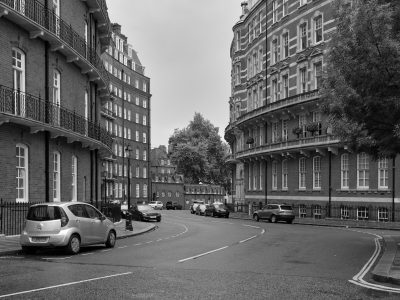As the ‘cautious but irreversible’ roadmap out of lockdown continues, many are hedging bets on the future of the office and our city centres.
While large corporations like HSBC have announced all employees can work from home, others such as Goldman Sachs are adamant that we return to the office as soon as possible.
Somewhere in between, and the bookies’ favourite so far, is the ‘hybrid model’, which combines home working and office working, with the latter possessing the amenities and social interaction that make the commute worthwhile.
The tech industry is mainly responsible for initiating the move to flexibly designed offices.
On-site ping pong tables, hammocks, massage rooms, plus food offerings for breakfast, lunch and dinner, were introduced to entice employees to stay in the office for longer.
Companies like Google were at the forefront of these ideas, with shared workspaces like WeWork following suit. Such offices have often been exclusively reserved for big companies – 40 percent of Global Fortune 500 are WeWork customers.
Large enterprises also occupy most of the impressive landmark buildings in the City of London, such as the newly completed 22 Bishopsgate.
The huge building has just 14 pre-let tenants, including Nasdaq, AXA Investment Managers and Hiscox, the latter of which have signed a 16-year lease.
As a result, small and medium enterprises (SMEs) don’t often have access to the City’s most prominent buildings.
Yet, SMEs account for 99.9 percent of the business population, generating 51 percent of all UK business turnover. Given their extreme majority, it seems unjust that they don’t get the bells and whistles that come with working in such buildings.
In the heart of the Square Mile, 33 Creechurch Lane, a new building designed by Assael Architecture and being developed by Merchant Land, has been designed and built specifically to cater to this market and provide a place for SMEs to grow and flourish.
Fundamental to 33 Creechurch Lane’s support for SMEs is flexibility, both in its architectural design and how it can accommodate mixed working models.
Bespoke design for each level of the new building includes multiple sized spaces and rooms and moveable walls to accommodate companies’ growth and contraction.
The open-plan offices will have the ability to be subdivided into smaller areas using various techniques, including screens and planting. SMEs also have the opportunity to take a self-contained floor at a scale that reflects their company’s size.
SMEs have suffered a great deal during the pandemic, with 80 percent of the UK’s SMEs seeing a decline in revenue due to Covid-19.
Even as the economy rebounds, many SMEs will struggle to afford large permanent office space. 33 Creechurch Lane can help with this by providing customisable spaces developed to suit specific needs and budgets. 33 Creechurch Lane will become a vibrant home to a wide range of SMEs from many different sectors.
Key to its design will be Covid-19 safe networking spaces that allow for the varied organisations to meet organically and form valuable connections.
Alongside the interior space, each floor will have a private outdoor area in the form of generous covered balconies where al fresco meetings can take place come rain or shine. The pocket park, a piece of greenery accessible to the wider public directly in front of the building, will also be a valuable place for connecting and providing an aesthetically pleasing location for breaks.
Other initiatives such as 166 cycle spaces, which are celebrated through the façade, showers, a cycle repair counter and a green wall abundant with local plant species will improve employees’ sense of wellbeing.
Simultaneously, these sensory and physical experiences contribute to the office’s desirability, making it somewhere employees want to spend time.
33 Creechurch Lane is in a position to help support SMEs, especially those who have struggled over the past year, whether financially or simply due to the constraints of working from home.
This development, we hope, will help small and medium-sized businesses land on their feet again, getting them off their kitchen tables and into a desirable and future-proof city space.

























Comments